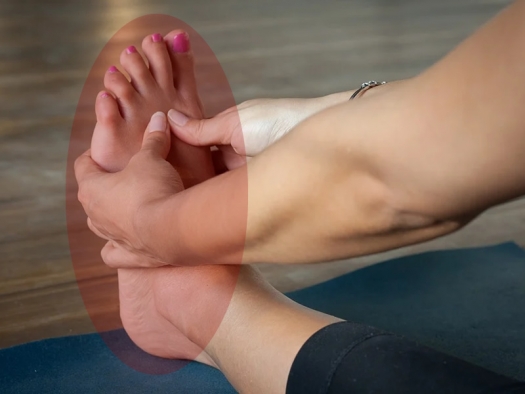FootPain.jpg

Photo by yogaphysique; highlight added / pixabay.com
Peripheral neuropathy is a real problem these days for more and more people. The disorder used to be mostly limited to diabetics. But these days it is showing up in many people without diabetes or any other diagnosed disorder. What’s worse is that peripheral neuropathy is a tough problem to deal with. At least it was until now.
Peripheral neuropathy causes burning, stinging pains, numbness in the feet, and loss of balance. And, if that’s not bad enough, it only gets worse over time.
The only conventional treatment is to treat the pain with various drugs. Unfortunately, the drugs have side effects, are expensive, don’t improve or even halt the disorder, and do nothing for the numbness and balance problems. That’s the bad news.
The good news is that this condition is now seeing the light – and responding. The light I am talking about is monochromatic low-level near-infrared light. Here’s what we’re finding out about this groundbreaking treatment.
About six months ago, a colleague of mine, Dr. Len Saputo in Walnut Creek, California, told me he was getting amazing results in patients with peripheral neuropathy. The device he is using is a new near-infrared light therapy device called Firefly Light Therapy. Dr. Saputo is a reliable man. He doesn’t exaggerate. Also, he’s been using various forms of infrared light therapy for decades. So, I checked it out.
Sure enough, there are several published studies using various infrared light devices to help with peripheral neuropathy. One of them caught my eye right away.
The study looked at a group of 18 patients with diabetic peripheral neuropathy. The researchers used a device called the Semmes Weinstein monofilament to measure the loss of sensation in the patients’ feet. They also used a modified Michigan Neuropathy Screening Instrument (MNSI) to measure the neuropathic symptoms, and a 10-point visual analog scale to measure pain. Each foot was treated for two weeks with a placebo light. Then, the feet were treated for an additional two weeks with near-infrared light.
As expected, the placebo light did nothing to any of the measurements. But, when the patients were switched to the near-infrared therapy, things were different.
There was a significant decrease in the number of areas on the feet that were numb. The MNSI measurements of the neuropathic pain symptoms decreased from 4.7 to 3.1. Pain reported on the 10-point visual analog scale decreased progressively from 4.2 to 3.2 after six treatments – and to 2.3 after 12 treatments. All of these improvements were statistically significant.
How about balance symptoms? Before the near infrared therapy, 90% of the patients were complaining of a “substantial balance impairment.” After the treatments, that number decreased to 17%. Any doctor who has treated patients with diabetic neuropathy will be impressed by these numbers.
So I purchased the Firefly system and I tried it on my worst case of neuropathy. When this woman walked down the hall, her balance was so bad that she would hit one of the walls every four to six feet. She was also on pain medication. Unbelievably, after only one 20-minute session with the Firefly system, she was walking normally. And after several other sessions, she was off medications and reporting no more pain. That’s amazing!
I have now had the opportunity to treat quite a few other patients both with and without diabetes, and the results are consistent – close to 100% relief of symptoms and balance problems. And no side effects.
There are quite a few near-infrared devices out there. They vary enormously depending on many factors such as waveforms, power output, and frequency mixing. That means that one device may not be as effective as another. Doctors can obtain the Firefly system at Bales Photonics. The device in the study mentioned above is the Anodyne Therapy System, which can be purchased from Anodyne Therapy.
References
Centers for Disease Control and Prevention. Washington, D.C.: U.S. Department of Health and Human Services. Vaccines and immunizations: MMR vaccine side effects. [updated 2017 May 8; cited 2017 Jun 21]. https://www.cdc.gov/vaccines/vac-gen/side-effects.htm#mmr.
Madsen KM, Hviid A, Vestergaard M, Schendel D, WohlFahrt J, Thorsen P, Olsen J, Melbye M. A population-based study of measles, mumps, and rubella vaccination and autism. N Engl J Med. 2002 Nov 7;347(19):1477,1480.
Originally published in the May 2020 edition of Second Opinion. Republished with permission.


